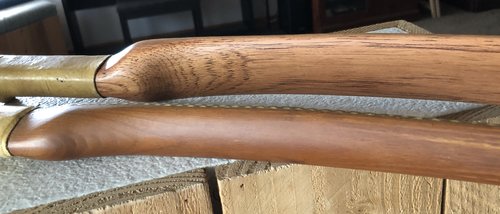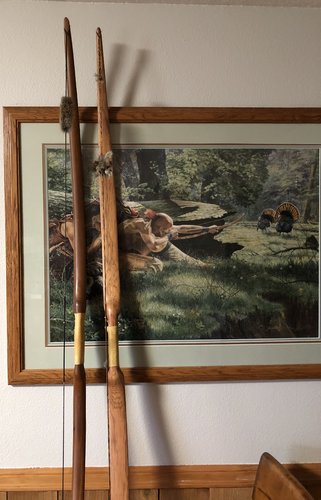Clawsar
Active member
This is a long shot but here goes. Kalispell got blown over on Sunday with many of the trees in downtown throwing branches and trunks around. We had a tall 80 foot elm (I think?) that came down on my truck and part of the house. As you drive through the neighborhoods it looks like a tornado hit.
Grasping for a silver lining, I’ve always wanted to make a self bow at some point and recently bought Clay Hayes book on the matter, but haven’t had a chance to read it yet. As there are huge pieces of trees around, here are my three questions:
1) is elm a decent wood for a bow? Also, how can I confirm this is an elm?
2) roughly what dimensions of the raw wood would I be looking for? I’ve see Clay make multiple staves from one log, and it looked maybe 6” around? I’m guessing at least 6’ in length and straight as can be?
3) I think the wood has to dry for a while, right? How long would be ideal?
If I can salvage any part of this mess I’d love to. I won’t be making anything immediately but it’s on my bucket list. There also seems a certain irony in making a bow from a tree (or at least the storm) that smashed my truck a bit. Thanks if anyone can help!
Grasping for a silver lining, I’ve always wanted to make a self bow at some point and recently bought Clay Hayes book on the matter, but haven’t had a chance to read it yet. As there are huge pieces of trees around, here are my three questions:
1) is elm a decent wood for a bow? Also, how can I confirm this is an elm?
2) roughly what dimensions of the raw wood would I be looking for? I’ve see Clay make multiple staves from one log, and it looked maybe 6” around? I’m guessing at least 6’ in length and straight as can be?
3) I think the wood has to dry for a while, right? How long would be ideal?
If I can salvage any part of this mess I’d love to. I won’t be making anything immediately but it’s on my bucket list. There also seems a certain irony in making a bow from a tree (or at least the storm) that smashed my truck a bit. Thanks if anyone can help!








